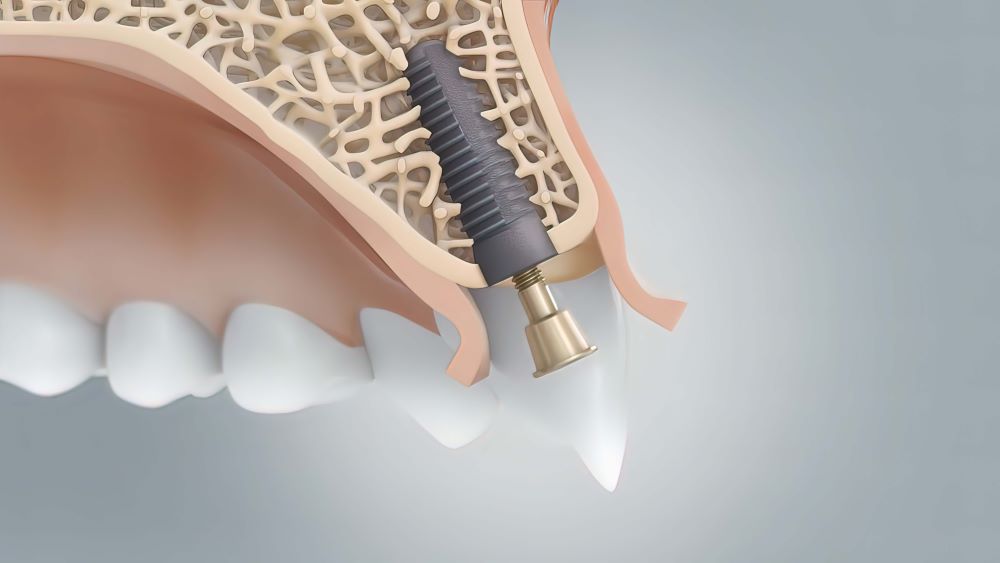Angle screw-retained abutments ensure secure, precise dental restorations for misaligned implants, limited space, or complex cases.


Angle screw-retained abutments are designed to resolve implant placement challenges when a prosthetic solution requires a slight angulation. These Multi-Angle screw-retained implant abutments, typically offered with angles ranging from 15° to 30°, are critical for cases where the implant’s axis does not align directly with the prosthetic framework. They are often used in posterior restorations or in situations where there is limited interocclusal space. The angular design allows the prosthetic components to be properly aligned, ensuring a secure and stable fit, which is essential for long-term function and aesthetic results.

We are committed to delivering reliable, high-quality dental components that meet the demands of today's advanced implant systems. With Manners Technology, you can trust that every component is crafted with the utmost care, ensuring long-term success in patient restorations.
Angled implant abutments with screw retention are ideal for complex clinical situations where a standard, straight abutment cannot provide the necessary fit or function. They are particularly beneficial for cases involving:
Limited Interocclusal Space: In cases where there is insufficient vertical space between the implant and opposing tooth structures, such as in posterior regions, adjustable angle screw-retained abutments help avoid the need for excessive prosthetic extension, allowing for a more comfortable and functional restoration.
Implant Misalignment: When the angle of the implant does not align with the desired prosthetic placement, such as in tilted or multi-angled implants, angle screw-retained abutments provide the necessary compensation. This flexibility ensures that the restoration can still be securely attached, improving both the fit and the overall aesthetic.
Anatomical Constraints: In cases where surrounding anatomy, such as bone structures or adjacent teeth, prevents ideal implant placement, angled prosthetic screw-fixed abutments enable optimal alignment of the prosthetic components without requiring a drastic alteration to the original implant positioning.
Complex Implant Cases: Angle screw-retained abutments are frequently used in full-arch restorations, where multiple implants may be placed at varying angles. They enable the correction of these deviations to ensure that the final prosthetic bridge fits precisely and functions optimally.
Manners Technology’s expertise in producing high-precision angled dental implant abutments ensures that these complex cases are handled with the utmost care and accuracy, providing reliable solutions for both simple and challenging implant placements.

The production of angled screw-retained abutments presents unique challenges due to the complex geometries involved, especially when the implant abutments need to accommodate specific angles, typically ranging from 15° to 30°. Achieving precision in these angles is critical for ensuring proper alignment and stability in dental restorations. Even minor inaccuracies can lead to improper fit, affecting the functionality and longevity of the implant system. Therefore, specialized manufacturing techniques, such as multi-axis CNC machining, are essential to meet the rigorous tolerances required.
At Manners Technology, we use Citizen Cincom Swiss-type sliding headstock lathes for the production of angled abutments. These lathes are designed for high-precision cutting and can perform both turning and milling operations in a single setup, which minimizes errors and optimizes efficiency. The multi-axis capability ensures that the complex geometries and angles are maintained with the utmost accuracy.
Once the primary angle is cut, further refining is required to create the necessary features such as internal threads, grooves, and anti-rotational elements. These features are crucial for securing the abutment in place and ensuring the prosthetic attachment is stable. Using advanced milling and cutting techniques, high tolerances are achieved to ensure a seamless integration with the implant system. This step is critical for the final prosthetic’s stability and aesthetic results.
After the machining process, surface treatment plays a significant role in enhancing the performance and longevity of the abutment. For titanium-based abutments, treatments such as anodization or sandblasting are often applied. These treatments enhance the abutment’s ability to bond with the bone (osseointegration) and also reduce the risk of bacterial adhesion, which is critical for the long-term success of the implant. In addition to improving biological compatibility, these surface treatments also provide the angled screw-fix implant connector with a smooth and durable surface that resists corrosion and wear. Surface roughness and finish are rigorously controlled during the manufacturing process to ensure that the final product meets the highest quality standards.
At Manners Technology, we specialize in the precision manufacturing of angled screw-secured abutments. Our advanced 5-axis CNC machining technology, combined with high-precision milling techniques and automated feeding systems, ensures that each abutment is made with the highest level of accuracy. And our strict quality control processes guarantee that each angled screw access abutment meets the required specifications for fit, function, and aesthetics. This combination of technology and expertise allows us to produce complex geometries, including critical angled cuts and intricate features, with the precision required for modern dental implants.